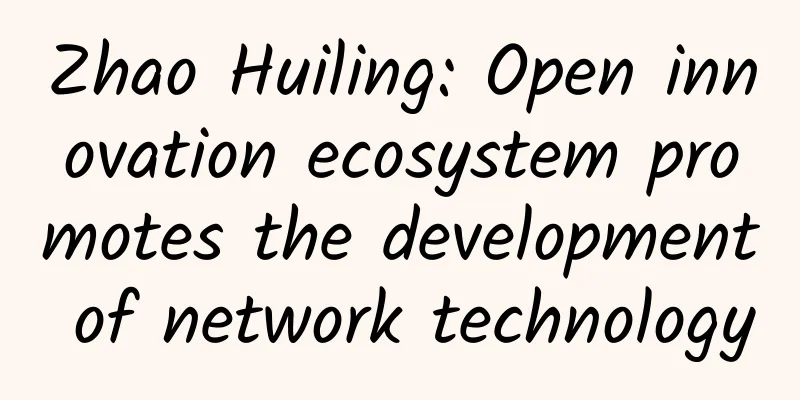In the era of cloud computing, there are three network factors that enterprises cannot ignore!

|
In the era of distributed interconnected cloud hosting application economy, the network plays a vital role. If enterprises want to host their workloads with a cloud service provider (CSP), they must make an informed decision about how to connect to the cloud infrastructure. When choosing a cloud service provider, enterprises sometimes overlook the importance of evaluating network options. Network connectivity alone is not enough, and enterprises also need to consider network speed, flexibility, network latency, number of hops, network redundancy, reliability, telecom provider options, and other network configurations. In addition, companies should evaluate the following factors: Where are users located? How do users connect to business applications? And how can users be authenticated using a centrally managed direct structure? Some companies prefer to have all users and employees connect to the corporate network first, and then connect to cloud-hosted applications through the corporate intranet. There are three network factors you need to consider: 1. Connect your corporate network to cloud providers Today, enterprises connect to the cloud primarily through two network options: virtual private networks (VPNs) and dedicated lines with fixed bandwidth. A VPN is an encrypted channel for data exchange over the Internet. VPNs are very easy to set up. Customers use VPNs 85-90% of the time. However, this connection is limited by the provider's network bandwidth and shares traffic online. For example, a retailer may need to ensure that all stores in different locations can connect to an application to access corporate applications hosted at a CSP. In this case, VPN is their best choice. Large telecom service providers only need to set up routers in CSP data centers or their points of presence (POPs) to provide dedicated lines with fixed bandwidth. They can provide customers with a separate encrypted channel through which their traffic can reach the CSP. Internally, telecom locations are interconnected by high-speed fiber optic lines that are shared among customers. Dedicated lines provide higher network redundancy and reduced network latency than public networks. However, ordering and setting up these lines requires a lot of time. Therefore, customers should leverage their existing telecom service providers to interconnect with their CSP's primary disaster recovery site. Large applications such as SAP and Oracle have many users located in different geographical locations, and in many cases, such applications require a dedicated line to host their core business applications. Some hosting service providers offer customers an option: customers can connect to a POP and then connect all their data centers internally through their high-speed fiber. 2. Use firewalls and load balancers A firewall is like an automatic door to a house; you only let in people you know. A firewall isolates internal traffic from external traffic. And a CSP can provide multiple firewalls to isolate data flows based on traffic type. Load balancers redirect global and local traffic to the correct hosts in the network. Load balancers are an inherent feature of the cloud and are provided to customers as Load Balancing as a Service (LbaaS). 3. Expand corporate IP and domain names to CSP It’s like extending your corporate network to another data center. You can even replicate your Active Directory to your CSP for faster, centralized user authentication. If you can use your own domain name and IP to set up infrastructure virtual machines and verify user identity on the CSP website, then migrating business applications to the cloud will undoubtedly become easier. Networking is a complex science. I've heard IT managers call it "black tech." But cloud monetization and automation tools in the enablement phase have significantly reduced the complexity and shortened the time it takes to get started with many networking options. |
<<: Design and analysis of weak current intelligent system in intelligent building
>>: Huawei Cloud meets in a blessed place, connecting the present and future of Fujian
Recommend
How wireless mesh networking technology can power smart buildings
Smart buildings are becoming increasingly importa...
Ten pictures and five questions to help you thoroughly understand Kafka architecture tuning
1 Do you know how Kafka's ultra-high concurre...
ColoCrossing US VPS 50% off, $1.97/month-1GB/25G SSD/20TB@1Gbps
ColoCrossing recently released a 50% discount cou...
80VPS: Special VPS hosting starting at 199 yuan per year, 50% off for regular VPS, optional CN2 lines in the United States/Hong Kong/Japan/Korea, etc.
80VPS is an early established Chinese hosting com...
Illustrated DHCP protocol, understand how your computer/mobile phone automatically obtains IP
Hello everyone, I am Bernie, an IT pre-sales engi...
100 days after 5G license issuance, Inspur Cloud promotes "High-tech Video" from concept to implementation
Recently, the new concept of "high-tech vide...
Operators are enthusiastic about deploying 4.5G: This will affect the commercial use of 5G
In 2017, more and more operators around the world...
Double your O&M efficiency! What you need to know about the Ansible Copy module
In automated operation and maintenance, file dist...
Weibu Online was shortlisted for CDM 2021 Black Unicorn Awards
On August 3, 2021, CyberDefense Magazine, a world...
Top 10 economic predictions for the tech industry in 2024
As we stand on the cusp of a new year, the tech i...
Talk about Multi-Access Edge Computing (MEC) based on SDN
The development of data generation and data proce...
Listen to what the broadband master said: How often should the router be turned off? Otherwise, the WiFi will become slow
Tomorrow is the end of the holiday. If you stay a...
[Black Friday] Virtono virtual hosting/VPS 30% off for the first month, 50% off for down payment or 30% off forever
Virtono is a foreign VPS hosting company founded ...
Runqian Software and Yonghong Technology signed a strategic cooperation agreement
[51CTO.com article] On November 8, 2017, Runqian ...
WiFi speed is slow, try these 8 simple tips
Slow WiFi speed is always a headache, especially ...









